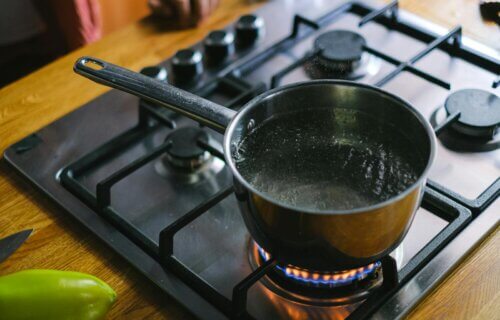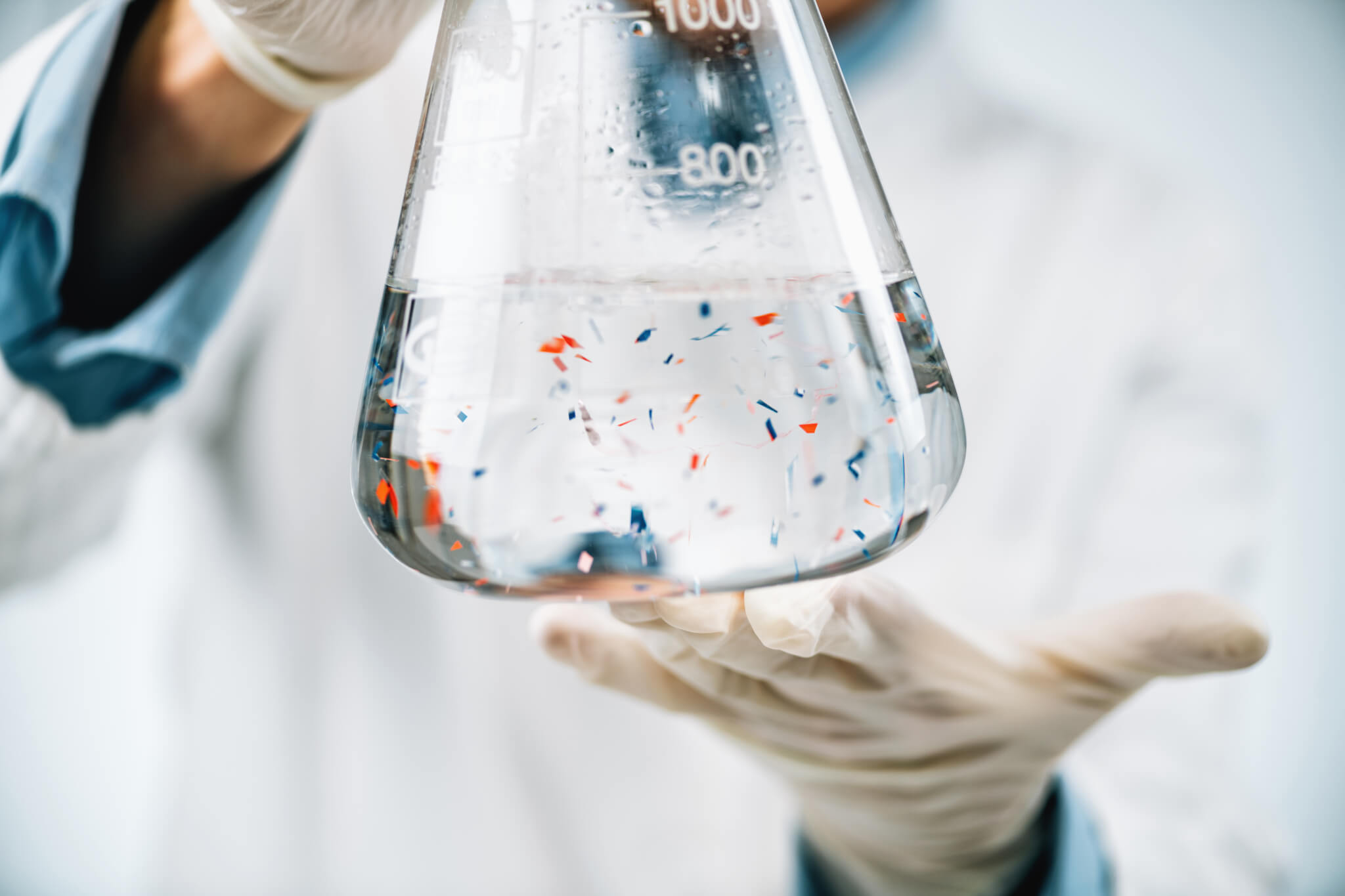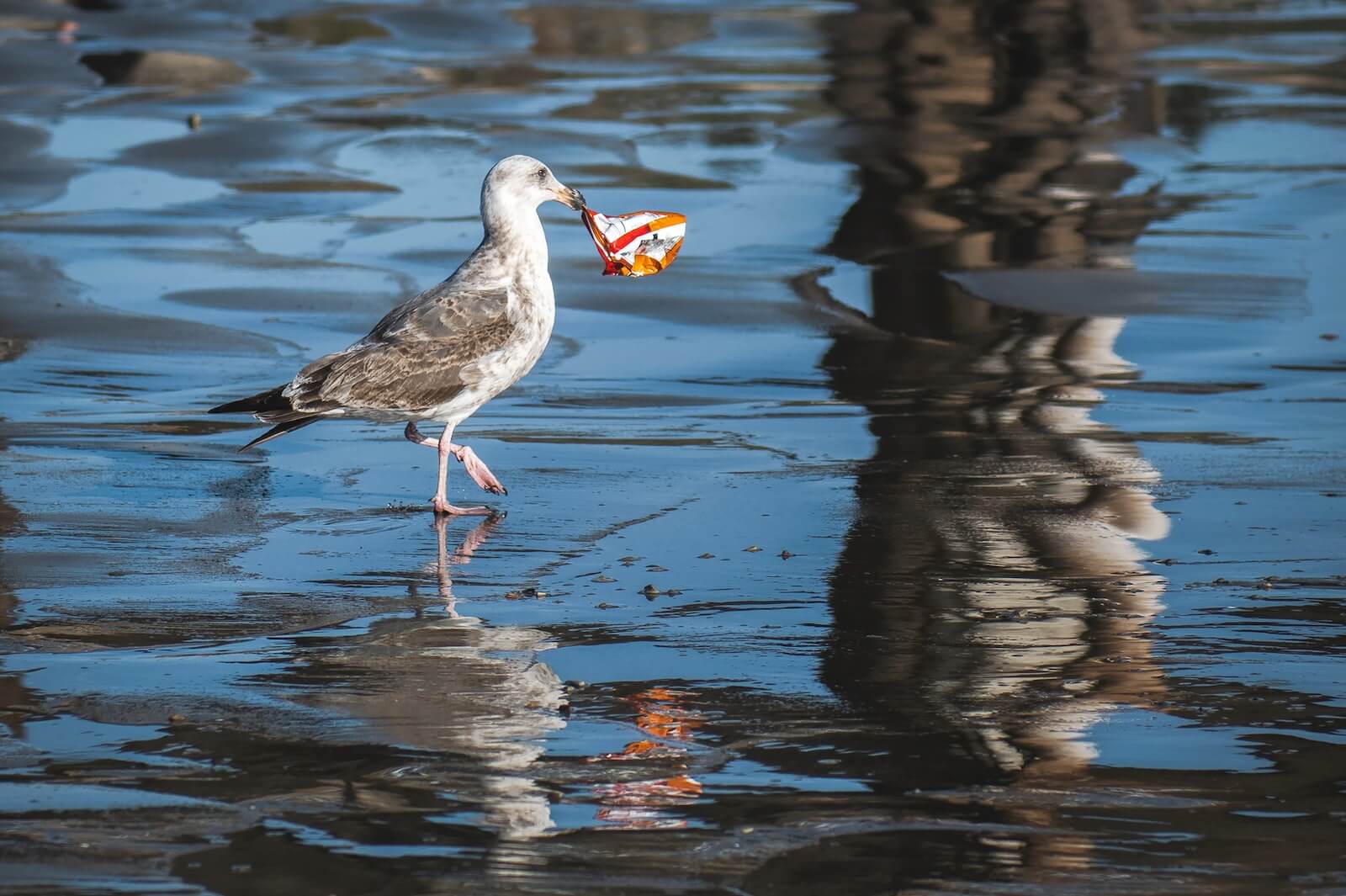A surprising kitchen remedy for cleaner drinking water free of microplastic contaminants.
byTibi Puiu
February 28, 2024
Edited and reviewed by Zoe Gordon
February 28, 2024
Edited and reviewed by Zoe Gordon

Boiling water is one of the oldest survival tricks in the book and is always a good idea when sourcing water from potentially contaminated sources. Boiling will kill any bacteria, viruses, and virtually any dangerous disease-causing germ. Now, a new study suggests that trusty boiling can also be a reliable technique to deal with one of the most pervasive contaminants of the 21st century: microplastics.
Researchers in China published a new study showing that boiling calcium-rich tap water can remove nearly 90% of nano- and microplastics (NMPs). Although the health hazards of contamination with microplastics are still unclear, this method is as easy and accessible as making a morning cup of tea or coffee.
Boiling microplastics away
Credit: Eddy Zeng.
Our water supplies are increasingly contaminated with NMPs. These particles range from as tiny as one-thousandth of a millimeter to as large as 5 millimeters. The health implications of ingesting these plastics are a growing concern, particularly regarding their potential to disrupt the human gut microbiome. While advanced filtration systems exist to tackle this issue, they often come with a hefty price tag, leaving a gap for accessible, cost-effective solutions.
Zhanjun Li and Eddy Zeng, both researchers at Guangzhou Medical University, performed experiments in which they boiled samples of hard tap water, spiked with NMPs, for five minutes. Hard water has a high mineral content and naturally forms limescale, or calcium carbonate (CaCO3), when boiled.
The Chinese chemists noticed that when CaCO3 formed during the boiling process, it created incrustations that trapped the NMPs. These encapsulated plastics could then be easily scrubbed away or caught by a simple filter, such as one used in brewing coffee.
This discovery is quite interesting. It shows how to remove microplastics without sophisticated technology, but rather, something as ubiquitous as the kettle on your stove.
This encapsulation effect was more pronounced in hard water, with a notable reduction of up to 90% of NMPs in samples containing 300 milligrams of CaCO3 per liter. However, even in soft water, with less than 60 milligrams of CaCO3 per liter, boiling managed to eliminate about 25% of NMPs.
Microplastics are everywhere. They’re in the oceans, on the most remote mountain tops and far-away islands, inside animals, even inside you. Studies have shown the average person ingests about 70,000 microplastic particles every year. More recently, microplastics have been found in human blood and lung tissue.
Microplastics are in canned fish and even in sea salt. One kilogram of salt can contain over 600 microplastics, meaning if you consume the maximum daily intake of 5 grams of salt, that’s equivalent to ingesting three microplastic particles a day. Even mosquitoes ingest microplastics, which move up the food chain after being eaten by other animals. Infants may ingest ten times the amount of microplastics that adults do, based on a 2021 study, probably due to their greater exposure to baby bottles and toys.
While the full picture of microplastics’ impact on human health is still emerging, research suggests potential problems in several areas. One concern is endocrine disruption, where microplastics may interfere with hormone production and function, potentially leading to metabolic disorders, developmental issues, and even reproductive problems. Additionally, microplastics could act as carriers for harmful chemicals, increasing their uptake by the body and potentially contributing to various diseases. Furthermore, studies suggest microplastics might directly trigger inflammatory responses and disrupt gut microbiota, potentially impacting overall health
In a world where the presence of microplastics in water supplies is an escalating concern, the simplicity of this latest solution is quite welcome. It’s a reminder that sometimes, the most effective solutions are already at our fingertips, waiting to be discovered in the routines of our daily lives.
Our water supplies are increasingly contaminated with NMPs. These particles range from as tiny as one-thousandth of a millimeter to as large as 5 millimeters. The health implications of ingesting these plastics are a growing concern, particularly regarding their potential to disrupt the human gut microbiome. While advanced filtration systems exist to tackle this issue, they often come with a hefty price tag, leaving a gap for accessible, cost-effective solutions.
Zhanjun Li and Eddy Zeng, both researchers at Guangzhou Medical University, performed experiments in which they boiled samples of hard tap water, spiked with NMPs, for five minutes. Hard water has a high mineral content and naturally forms limescale, or calcium carbonate (CaCO3), when boiled.
The Chinese chemists noticed that when CaCO3 formed during the boiling process, it created incrustations that trapped the NMPs. These encapsulated plastics could then be easily scrubbed away or caught by a simple filter, such as one used in brewing coffee.
This discovery is quite interesting. It shows how to remove microplastics without sophisticated technology, but rather, something as ubiquitous as the kettle on your stove.
This encapsulation effect was more pronounced in hard water, with a notable reduction of up to 90% of NMPs in samples containing 300 milligrams of CaCO3 per liter. However, even in soft water, with less than 60 milligrams of CaCO3 per liter, boiling managed to eliminate about 25% of NMPs.
Microplastics are everywhere. They’re in the oceans, on the most remote mountain tops and far-away islands, inside animals, even inside you. Studies have shown the average person ingests about 70,000 microplastic particles every year. More recently, microplastics have been found in human blood and lung tissue.
Microplastics are in canned fish and even in sea salt. One kilogram of salt can contain over 600 microplastics, meaning if you consume the maximum daily intake of 5 grams of salt, that’s equivalent to ingesting three microplastic particles a day. Even mosquitoes ingest microplastics, which move up the food chain after being eaten by other animals. Infants may ingest ten times the amount of microplastics that adults do, based on a 2021 study, probably due to their greater exposure to baby bottles and toys.
While the full picture of microplastics’ impact on human health is still emerging, research suggests potential problems in several areas. One concern is endocrine disruption, where microplastics may interfere with hormone production and function, potentially leading to metabolic disorders, developmental issues, and even reproductive problems. Additionally, microplastics could act as carriers for harmful chemicals, increasing their uptake by the body and potentially contributing to various diseases. Furthermore, studies suggest microplastics might directly trigger inflammatory responses and disrupt gut microbiota, potentially impacting overall health
In a world where the presence of microplastics in water supplies is an escalating concern, the simplicity of this latest solution is quite welcome. It’s a reminder that sometimes, the most effective solutions are already at our fingertips, waiting to be discovered in the routines of our daily lives.
Boiling tap water first may be the only safe way to drink it

The secret to this method’s success lies in the chemistry of hard water, which is naturally high in minerals. When boiled, hard water forms limescale, or calcium carbonate (CaCO3), a familiar foe in kettles and pots worldwide. The researchers discovered that as the water’s temperature rose, calcium carbonate began to crystallize, trapping the plastic particles within its structure. Over time, these plastic-encapsulating crystals accumulate, much like the limescale deposits we often scrub away, offering a convenient means to remove NMPs from the water.
Zeng highlights that any residual crystals floating in the water after boiling can easily be filtered out using everyday household items, such as a coffee filter. The team’s experiments showed an impressive efficacy rate; in hard water with 300 milligrams of calcium carbonate per liter, up to 90 percent of NMPs were removed post-boiling. Even in soft water, which contains less calcium carbonate, boiling managed to eliminate about 25 percent of nano and microplastics.

Gut Health: Microplastics may affect the human gut microbiome, the complex
Toxicity: Microplastics can absorb and carry toxic chemicals, such as pesticides and industrial chemicals, which they pick up as they travel through various environments. Once ingested, these toxins may leach into the body, posing risks to health by potentially causing hormonal imbalances, developmental issues, and increased risk of chronic diseases.
Physical Damage: Although the body can excrete small particles, there is concern that microplastics could accumulate in organs and tissues, leading to inflammation or other physical damage over time.
The widespread presence of microplastics means that most people are likely ingesting them through food and water. Seafood, particularly shellfish and fish that are eaten whole, are significant sources due to the accumulation of plastics in marine environments. Microplastics are not limited to seafood, though; they have been found in fruits, vegetables, and even in products like honey and sugar.

Choose fresh and unprocessed foods: Limiting consumption of processed foods can reduce exposure to plastics used in packaging.

Photo by Anna Shvets from Pexels
by StudyFinds Staff
NEW YORK — Want a glass of water from the tap without worrying about consuming microplastics? You may have to boil it first — just like you would with tea or coffee. An innovative new approach reveals that boiling calcium-rich tap water can eliminate nearly 90 percent of these minuscule nano and microplastic (NMPs) invaders.
Nano and microplastics, particles ranging from one thousandth of a millimeter to as large as five millimeters, are becoming a ubiquitous threat to our water supplies. While the full impact of these particles on human health remains under study, there’s growing concern over their potential to disrupt the gut microbiome. Current strategies to filter out NMPs often involve sophisticated and costly systems, leaving a gap for simple, cost-effective solutions to limit human exposure to these synthetic particles.
Enter the research team led by Zhanjun Li and Eddy Zeng — from the School of Biomedical Engineering at Guangzhou Medical University in China — who embarked on a quest to determine if the act of boiling could serve as an efficient method to purge NMPs from both hard and soft tap water. The team introduced NMPs into samples of hard tap water, then boiled these mixtures for five minutes. Upon cooling, scientists measured the levels of remaining free-floating plastics.
by StudyFinds Staff
NEW YORK — Want a glass of water from the tap without worrying about consuming microplastics? You may have to boil it first — just like you would with tea or coffee. An innovative new approach reveals that boiling calcium-rich tap water can eliminate nearly 90 percent of these minuscule nano and microplastic (NMPs) invaders.
Nano and microplastics, particles ranging from one thousandth of a millimeter to as large as five millimeters, are becoming a ubiquitous threat to our water supplies. While the full impact of these particles on human health remains under study, there’s growing concern over their potential to disrupt the gut microbiome. Current strategies to filter out NMPs often involve sophisticated and costly systems, leaving a gap for simple, cost-effective solutions to limit human exposure to these synthetic particles.
Enter the research team led by Zhanjun Li and Eddy Zeng — from the School of Biomedical Engineering at Guangzhou Medical University in China — who embarked on a quest to determine if the act of boiling could serve as an efficient method to purge NMPs from both hard and soft tap water. The team introduced NMPs into samples of hard tap water, then boiled these mixtures for five minutes. Upon cooling, scientists measured the levels of remaining free-floating plastics.
The secret to this method’s success lies in the chemistry of hard water, which is naturally high in minerals. When boiled, hard water forms limescale, or calcium carbonate (CaCO3), a familiar foe in kettles and pots worldwide. The researchers discovered that as the water’s temperature rose, calcium carbonate began to crystallize, trapping the plastic particles within its structure. Over time, these plastic-encapsulating crystals accumulate, much like the limescale deposits we often scrub away, offering a convenient means to remove NMPs from the water.
Zeng highlights that any residual crystals floating in the water after boiling can easily be filtered out using everyday household items, such as a coffee filter. The team’s experiments showed an impressive efficacy rate; in hard water with 300 milligrams of calcium carbonate per liter, up to 90 percent of NMPs were removed post-boiling. Even in soft water, which contains less calcium carbonate, boiling managed to eliminate about 25 percent of nano and microplastics.

Boiling calcium-rich tap water can eliminate nearly 90 percent of these minuscule nano- and microplastic (NMPs) invaders.
(© Microgen – stock.adobe.com)
This discovery paves the way for a simple, yet effective strategy to reduce our consumption of NMPs, making the daily act of boiling water for tea or coffee a potentially powerful tool in the fight against plastic pollution. The researchers received support from the National Natural Science Foundation of China.
The study is published in the journal Environmental Science & Technology Letters.
Dangers Of Microplastics In Human Diet
In recent years, the issue of microplastics has emerged as a silent but pervasive environmental threat. Originating from the breakdown of larger plastic items, microplastics have made their way into every corner of the globe, from the deepest oceans to the highest mountains, and alarmingly, into the human food chain.
Microplastics are found in a wide array of sources, including cosmetic products, synthetic clothing, and industrial processes. However, they also result from the degradation of larger plastic waste items in natural environments. These minuscule particles have been detected in tap and bottled water, seafood, salt, beer, and even in the air we breathe. Their omnipresence makes avoiding them completely nearly impossible, raising concerns about their impact on human health.
The long-term health effects of microplastic consumption are still under investigation, but early research suggests several potential risks:
This discovery paves the way for a simple, yet effective strategy to reduce our consumption of NMPs, making the daily act of boiling water for tea or coffee a potentially powerful tool in the fight against plastic pollution. The researchers received support from the National Natural Science Foundation of China.
The study is published in the journal Environmental Science & Technology Letters.
Dangers Of Microplastics In Human Diet
In recent years, the issue of microplastics has emerged as a silent but pervasive environmental threat. Originating from the breakdown of larger plastic items, microplastics have made their way into every corner of the globe, from the deepest oceans to the highest mountains, and alarmingly, into the human food chain.
Microplastics are found in a wide array of sources, including cosmetic products, synthetic clothing, and industrial processes. However, they also result from the degradation of larger plastic waste items in natural environments. These minuscule particles have been detected in tap and bottled water, seafood, salt, beer, and even in the air we breathe. Their omnipresence makes avoiding them completely nearly impossible, raising concerns about their impact on human health.
The long-term health effects of microplastic consumption are still under investigation, but early research suggests several potential risks:
Gut Health: Microplastics may affect the human gut microbiome, the complex
community of microorganisms living in our digestive tracts. These microorganisms play a crucial role in digestion, immunity, and overall health. Microplastics can carry pollutants and harmful bacteria, potentially disrupting the delicate balance of the gut microbiome.
Toxicity: Microplastics can absorb and carry toxic chemicals, such as pesticides and industrial chemicals, which they pick up as they travel through various environments. Once ingested, these toxins may leach into the body, posing risks to health by potentially causing hormonal imbalances, developmental issues, and increased risk of chronic diseases.
Physical Damage: Although the body can excrete small particles, there is concern that microplastics could accumulate in organs and tissues, leading to inflammation or other physical damage over time.
The widespread presence of microplastics means that most people are likely ingesting them through food and water. Seafood, particularly shellfish and fish that are eaten whole, are significant sources due to the accumulation of plastics in marine environments. Microplastics are not limited to seafood, though; they have been found in fruits, vegetables, and even in products like honey and sugar.

Microplastics are found in a wide array of sources, including cosmetic products, synthetic clothing, and industrial processes. However, they also result from the degradation of larger plastic waste items in natural environments.
(Photo by Tim Mossholder from Unsplash)
How To Reduce Exposure
While completely avoiding microplastics might be unrealistic, there are steps individuals can take to reduce their exposure:Minimize the use of single-use plastics: Opt for reusable bags, bottles, and containers whenever possible.
How To Reduce Exposure
While completely avoiding microplastics might be unrealistic, there are steps individuals can take to reduce their exposure:Minimize the use of single-use plastics: Opt for reusable bags, bottles, and containers whenever possible.
Choose fresh and unprocessed foods: Limiting consumption of processed foods can reduce exposure to plastics used in packaging.

No comments:
Post a Comment